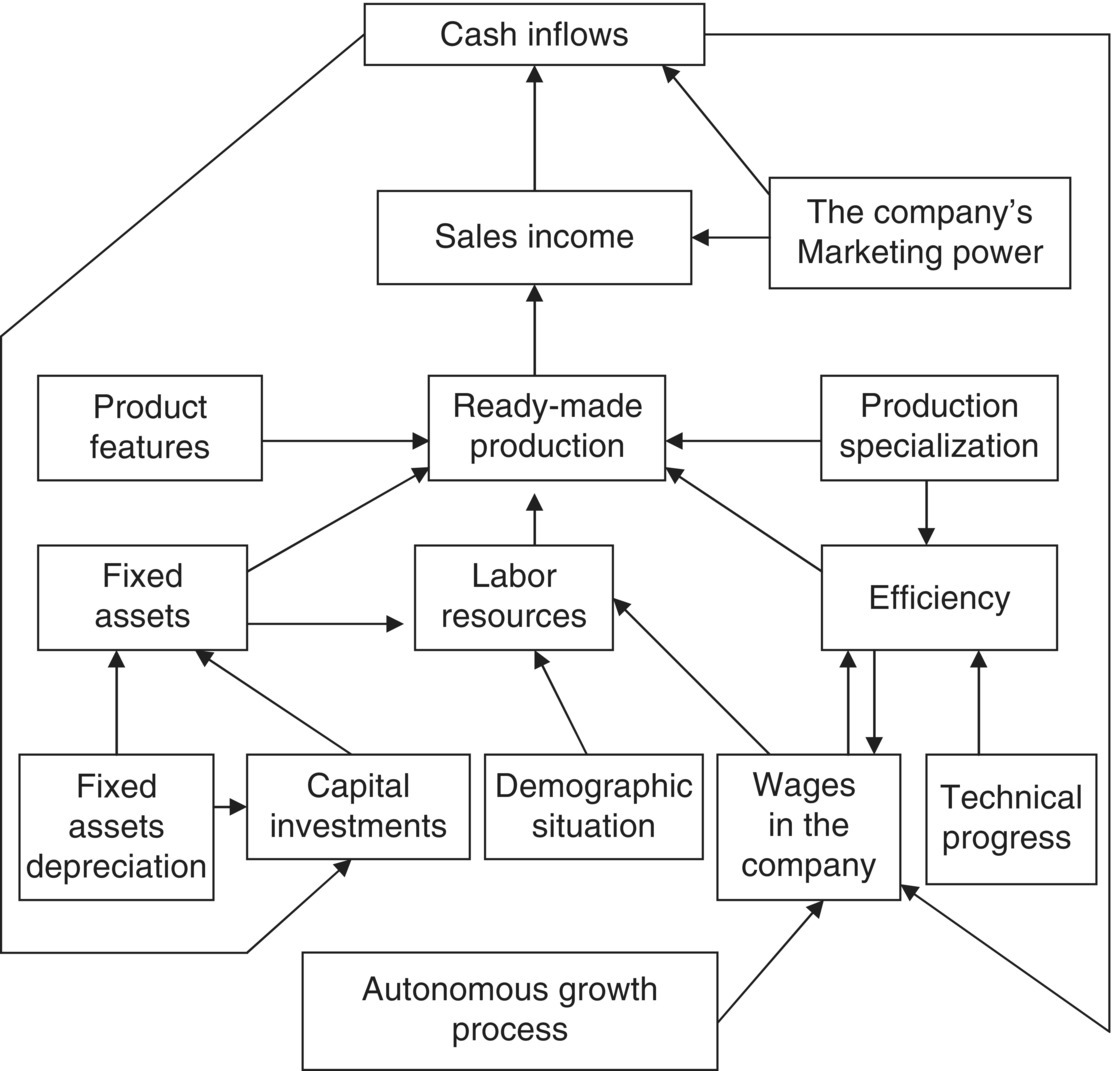4 An empirical econometric model of a small-sized enterprise1
4.1 Specification of a small-sized enterprise’s econometric model
The mechanism linking important economic variables of a small-sized enterprise has many features that are common with a structure of a large- or medium-sized company. There are, however, more differences than similarities, which can be noticed while analyzing Figure 4.1.

Figure 4.1 Economic interdependencies in a small-sized enterprise.
Source: Wiśniewski, J. W. (2003): An econometric model of a small-sized enterprise, Chapter 2.
There is a significant difference in the perception of reality within a small-sized company, in comparison to a large-sized one – the domination of a short time-horizon. In a small business entity, monthly vision prevails over the annual one. A quarter, in a small-sized company, is a period of a longer perspective, than a year in a large-sized company. Therefore, for example, perception of a small-sized company’s production is divided into three parts. Specificity of a small-sized manufacturing enterprise requires distinction of three concepts: manufacture of ready-made production, the amount of the sales income, and the cash inflows obtained from the sales. Between those concepts, each of which represents a category of economic production, there is a time interval which is significant for a small-sized business entity. ...
Get Microeconometrics in Business Management now with the O’Reilly learning platform.
O’Reilly members experience books, live events, courses curated by job role, and more from O’Reilly and nearly 200 top publishers.

